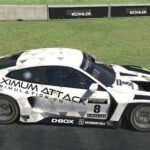Racing is not just about speed and skill; it’s deeply rooted in the principles of physics. Understanding the science behind racing can enhance both the performance of the car and the strategy of the driver. Here’s an exploration of the fundamental physics that underpin the high-speed world of racing:
1. Force and Acceleration
1.1. Newton’s Laws of Motion:
- First Law (Inertia): A car will remain at rest or in uniform motion unless acted upon by an external force. In racing, this means acceleration and braking require significant force.
- Second Law (F=ma): Acceleration (a) of a car is determined by the force (F) applied and the car’s mass (m). The greater the force applied (e.g., from the engine) and the lighter the car, the faster it can accelerate.
- Third Law (Action and Reaction): For every action, there is an equal and opposite reaction. This principle is evident in the car’s tires pushing against the road and the road pushing back, which affects acceleration and handling.
1.2. Drag and Air Resistance:
- Drag Force: As a car speeds up, air resistance (drag) increases. The drag force (Fd) is proportional to the square of the car’s velocity (v), the drag coefficient (Cd), and the frontal area (A) of the car: Fd=12ρv2CdAF_d = \frac{1}{2} \rho v^2 C_d AFd=21ρv2CdA, where ρ\rhoρ is the air density.
- Impact: High drag forces can significantly reduce top speed and fuel efficiency, making aerodynamic design crucial in racing.
2. Traction and Grip
2.1. Friction:
- Tire Grip: The friction between the tires and the track surface provides the grip necessary for acceleration, braking, and cornering. This frictional force is governed by the coefficient of friction (μ) and the normal force (N) exerted by the car’s weight: Ff=μNF_f = \mu NFf=μN.
- Traction Limits: During cornering or hard acceleration, the frictional force limits the maximum speed and forces before the tires lose grip and skid.
2.2. Tire Dynamics:
- Contact Patch: The area of the tire in contact with the road, known as the contact patch, affects grip. A larger contact patch generally provides better traction.
- Slip Angle: The angle between the direction the tires are pointing and the direction they are traveling is crucial. Managing slip angles effectively helps maintain control and optimize cornering performance.
3. Aerodynamics
3.1. Downforce:
- Lift and Downforce: Aerodynamic forces can create lift or downforce. For racing cars, generating downforce increases the vertical load on the tires, enhancing grip and stability. This is achieved through components like front and rear wings, diffusers, and undertrays.
- Effectiveness: The downforce (F_d) is influenced by the car’s speed (v), the aerodynamic coefficient (C_l), and the aerodynamic area (A): Fd=12ρv2ClAF_d = \frac{1}{2} \rho v^2 C_l AFd=21ρv2ClA. Increased downforce improves cornering ability and reduces lift, but also increases drag.
online casino
Atodamakina.com appears to be a website focused on machinery or industrial equipment. While visitors explore information and solutions for their business needs, some individuals might also enjoy online entertainment during their leisure time. For those seeking engaging pastimes, an online casino can offer a variety of games and experiences. Just as Atodamakina.com provides resources for industrial operations, this link can guide users to a diverse world of online gaming.
3.2. Drag Reduction:
- Drag Reduction System (DRS): In Formula 1, DRS is used to reduce drag and increase speed on straights. By adjusting the angle of the rear wing, drivers can temporarily decrease aerodynamic drag, facilitating overtaking.
4. Cornering and Centripetal Force
4.1. Centripetal Force:
- Cornering Forces: When a car turns, it experiences centripetal force (Fc), which keeps it on its circular path. This force is given by Fc=mv2rF_c = \frac{mv^2}{r}Fc=rmv2, where m is the car’s mass, v is the velocity, and r is the radius of the turn.
- G-forces: High-speed cornering generates significant G-forces, impacting both the car’s dynamics and the driver’s ability to withstand these forces.
4.2. Understeer and Oversteer:
- Understeer: Occurs when the front tires lose grip, causing the car to continue straight despite steering input. This is often managed by reducing speed or adjusting steering inputs.
- Oversteer: Occurs when the rear tires lose grip, causing the car to spin out. This can be controlled by counter-steering and managing throttle inputs.
5. Braking and Deceleration
5.1. Braking Force:
- Braking Dynamics: The braking force is determined by the braking system’s effectiveness and the friction between the tires and the road. The force is also affected by the car’s speed and the brake system’s design.
- Heat Dissipation: High-speed braking generates significant heat. Efficient heat dissipation is essential to prevent brake fade and maintain braking performance.
5.2. Weight Transfer:
- Front-to-Back Transfer: During braking, weight shifts to the front of the car, increasing front tire grip while reducing rear tire grip. Proper management of this weight transfer is crucial for maintaining stability and control.
6. Vehicle Dynamics and Suspension
6.1. Suspension Systems:
- Function: The suspension system controls the car’s ride quality and handling by absorbing shocks and maintaining tire contact with the road. It plays a critical role in managing the forces experienced during acceleration, braking, and cornering.
- Adjustments: Racing cars often feature adjustable suspension setups to fine-tune handling characteristics for different tracks and conditions.
6.2. Roll and Pitch:
- Body Roll: When cornering, the car’s body rolls due to centrifugal forces. Suspension settings and anti-roll bars help manage body roll and maintain stability.
- Pitch: During acceleration and braking, the car’s body pitches forward or backward. Suspension settings help control this pitching motion to optimize performance.
Conclusion
The physics of speed in racing involves a complex interplay of forces and principles. Understanding how acceleration, traction, aerodynamics, cornering dynamics, braking, and suspension work together can enhance both the performance of the vehicle and the strategy of the driver. Mastery of these concepts not only improves racing outcomes but also deepens the appreciation of the science behind the sport.









